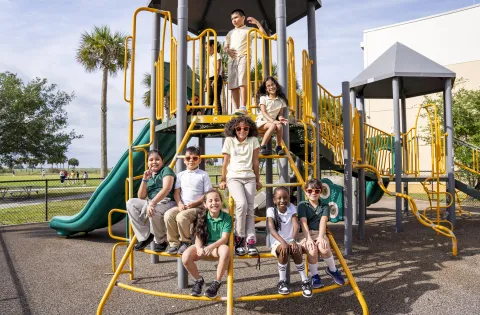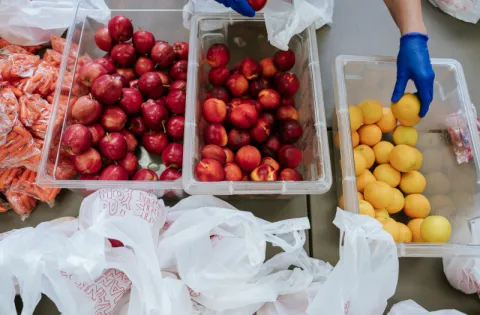Tina M has been a supporter of No Kid Hungry since 2008. She lives in California. Today she shares why she has been a longtime supporter of our work.

The United States is one of the wealthiest countries in the world. The fact that there are kids taking ketchup packets home from school to mix with hot water to make tomato soup is just unacceptable and we should not tolerate that happening. Poverty in America may not always be visible, but it exists, and millions of kids go hungry.
I am fortunate to never have known hunger, but as a kid, my family relied on SNAP to make ends meet. I am the oldest of 5 siblings. My father’s salary wasn’t enough, so SNAP helped us put food on the table.
I was born in Tijuana, Mexico. When I was 6 years old, my family moved to San Diego right across the border. My mom made us breakfast every morning before we went to school and she made our brown bag lunch every single day. We did not have money to buy lunch at school, and being a kid of a Mexican mother, she would have never allowed us to buy food in the cafeteria when she could just make it for us. Every day, my mom made a sandwich and put a banana in our brown bag. Sometimes it would be an apple. Never grapes because my mom supported the farm workers grape boycott in California.
Our weekly allowance was 25 cents, which could buy five candy bars. Sometimes, we’d bring candy to school as a treat—a small luxury in an otherwise tight budget. As we grew older, we all started working to help make ends meet. My brothers had paper routes, and at 15, I became a file clerk at the local newspaper. Half of our earnings went to the household budget, a reminder of how much our family relied on every dollar. Even with our contributions, buying lunch at the high school cafeteria was a rare treat, not a given.
Accessibility to food is a basic human right. I’ve seen poverty here in America in low-income areas as well as when I drove through the Navajo reservation, many years ago.
It had not really hit me that kids could go hungry until I lived in the DC area, and there was a huge snowstorm. I was working at a retail store, and I remember saying out loud that the kids must be thrilled that school was going to be closed for a couple of days.
Then one of my team members mentioned to me that the bad thing about kids missing school is that they might be missing the only meals they would normally have because they were in the free meal program. That thought had never crossed my mind. That made me think about what happens to those kids in the summer when school is out.
Donating to No Kid Hungry is important to me because no child should ever have to wonder where their next meal will come from. When I think about my own childhood, I’m reminded of how much my family relied on support like SNAP to put food on the table. Today I’m in a position to give back and I can’t think of a better way to do it than supporting No Kid Hungry.
How You Can Help
Almost 14 million children in America are living with hunger. We know what it takes to end this crisis, and your support will make a difference.
Donate: $1 can help provide 10 meals* for kids. Your support will help us fund meal programs all over the country and help us advocate for policies that will help kids get the meals they need. *Donations help support programs that feed kids; No Kid Hungry does not provide individual meals. Learn more at NoKidHungry.org/OneDollar.
Speak up for kids: Reach out to your elected officials and ask them to do more to end childhood hunger. Tell your lawmaker to advocate for policies that will help kids get the meals they need.


